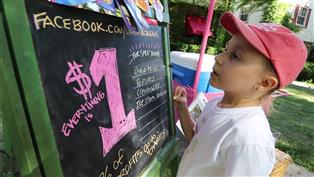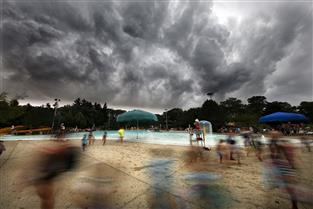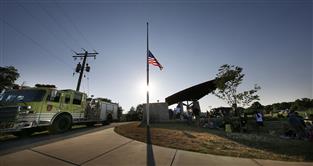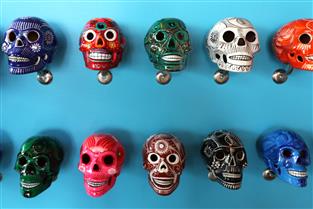A new school year means new problems, but it also means the return of old ones. And one of the oldest is lice.
Lice can occur in any population, but, according to the Centers for Disease Control, infestation in the United States is "most common among preschool children attending child care, elementary schoolchildren, and the household members of infested children."
Nationally, there are an estimated 6 million to 12 million infestations every year among children 3 to 11 years old, the CDC said.
And Wauwatosa is a contributor.
Part of student body
Although comprehensive local numbers are not available, at least a handful of local schools, public and private, had problems with lice recently.
"We had head lice in many of our schools last year," said Sally Roepe, district nurse for the Wauwatosa school system.
She declined to name the schools.
"It manages to run the gamut, and go from school to school," she said. "It's possible for them to be any where at any time."
Roepe estimates that, out of 7,000 students, about 100 kids were affected, athough she believes the incidence of lice may be over-reported.
The cycle of lice
Lice attach to human hair close to the scalp and feed on blood several times a day. Adult lice die in less than a day when removed from that environment. Young lice die more quickly.
Parents are asked to inform the district when they discover lice in their children, so that Roepe or her half-time assistant, also a nurse, can check the child's "close contacts" to see if the lice have spread, which almost always happens through head-to-head contact.
In addition, "If we have a report that a child has it, we will check them," she said.
Parents of children with lice infestation are asked to seek treatment for the student, and only send them back when the living lice are eradicated, which is usually in a day or two.
Roepe said the district policy does not require the nits - lice eggs - attached to hair to be completely gone, because nits cannot move from child to child.
Still, those nits do hatch in five to seven days, and for that reason, "once kids catch lice it's not just a matter of slapping that shampoo on. You have to keep checking, checking, checking," she said.
Nit-picking policy
For all their unpleasantness, lice are not a symptom of bad hygiene or a lack of cleanliness at home or school, according to the CDC. Also, lice do not carry disease and are not considered a reportable disease themselves by the agency.
Still, the National Pediculosis Association, a nonprofit that studies lice, is more alarmist, saying, "the potential for disease transmission via the head louse should not be underestimated." It also promotes a "no-nit" policy for students in school.
St. Jude the Apostle School in Wauwatosa follows the NPA guidelines.
Principal Catherine LaDien said the school took an aggressive approach against lice and nits a year ago, instituting monthly checks of every student. This year, the school is doing a pre-first-day check of all 480 students in addition to the monthly checks, which are handled by a group of trained, volunteer parents who do a classroom at a time, and use a check-off list.
Last year, she said, 14 students were found to have lice. Children treated for lice undergo a re-check when they return.
"I know it's an extremely aggressive policy and it's stronger that the public schools," LaDien said, though adding, "It's a priority for quite a few of the parents becaue the've had to delice their homes."
LaDien said the school is as scrupulous about the flu and other infectious diseases as it is about lice.
"Hand-sanitizers in every room," she said.
Limited city involvement
The city's Health Department suggests students with lice should first address it through the school, said Lori Nielsen, city nursing supervisor. The city has a statement on line, atwww.wautwatosa.net/health (click on "Environmental Health" and then "Nusiances & Human Health Hazards").
Of the lice-afflicted, Nielsen said, "If they want help, we'll be happy to thalk them through it."
More from News and Features
- Anodyne Coffee plans to open location in Wauwatosa Village
- Wauwatosa Meetings: Aug. 4
- Video: Wauwatosa girl's curbside ice cream stand raises money for the hungry
- Wauwatosa News and Notes: Hands-only CPR training offered; Firefly Art Fair is Aug. 6-7
- Wauwatosa Ask Now: Why are there barriers and fencing along the North Avenue bridges over the Menomonee River?
- Mystery Photo Contest: July 28
- Wauwatosa gears up for National Night Out event, this year at the zoo
- Election 2016: Wisconsin's 4th District candidates weigh in
- Wauwatosa's Luther Manor residents share smiles through flower delivery
- Wauwatosa Police Report: July 17-23













